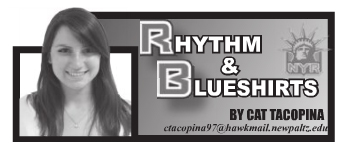
There was one shred of hope left for a 2012-13 NHL season a week ago. Among all the talks of negotiations going nowhere and sneaky public relations battles, there was one beacon standing at the center of shrinking optimism for a season of hockey – then, the NHL 2013 Winter Classic was officially canceled on Nov. 2.
The light of hope has diminished and the rest is silence.
Is that melodramatic? Perhaps, but there’s no denying that with the Winter Classic canceled, the incentive to get the NHL back up and running died a little.
Players can say whatever they want about how much they love and want to play hockey and owners can talk about how much they want to get things started so that they can please the fans and do business fairly.
But now it’s time to get real. Let’s face it, the only people who are truly suffering at this point are the fans. Team owners have other businesses and enterprises to keep them occupied and players have multiple playing options and endorsement deals to keep them going.
Of course, players are more than likely anxious to put their NHL sweaters on and itching to lace up their skates. However, the fans are the ones with no real outlet to sustain their craving for hockey. With the way things look, it’s probably going to stay that way for a while.
The center of this feud has been the amount of money players and owners will get from revenue. It’s actually unbelievable that two collective groups of grown men haven’t been able to come up with a solution at this point. And do you want to know something?
Who knows if they even will at this point?
I had said several weeks ago that if there was going to be an NHL season, it would include a Winter Classic. Although very young, it’s arguable the yearly event has become one of the most highly anticipated sporting events in America.
Not only is it highly anticipated, it also brings in some of the most revenue. And the desire for money after missing out on early season games would have been a desperate desire for both the NHL and NHLPA.
The 2013 classic was to be a match up between Original Six teams the Detroit Red Wings and Toronto Maple Leafs. This could have been the biggest Winter Classic cash cow yet.
Last year’s Winter Classic between the New York Rangers and the Philadelphia Flyers was without a doubt the biggest and most advertised match up in the event’s history. The 2013 Detroit/Toronto match up was going to destroy that. The game was going to be held at University of Michigan’s Big House, which sits 100,000 people. It would have been a shock if the place didn’t sell out within a week.
Not only would that bring in a huge sum of money, but it would have brought in a Canadian audience that, despite the fact that hockey is their national past time, hasn’t been present since the Winter Classic began.
Each Classic has featured an American team, with the closest team to Canada being the Buffalo Sabres, who played in the league’s first Winter Classic in 2008. With Toronto entering the picture, there would have been a slew of Canadian support. It wouldn’t have been surprising to see an atmosphere and tension similar to that of the 2010 Olympic gold medal game.
Having two of the most storied and oldest franchises in the NHL compete in a Winter Classic and the money it would have made no doubt should have been a major incentive and driving force toward CBA negotiations.
Instead, the ice keeps on getting thinner and thinner for the NHL.
Cat Tacopina

